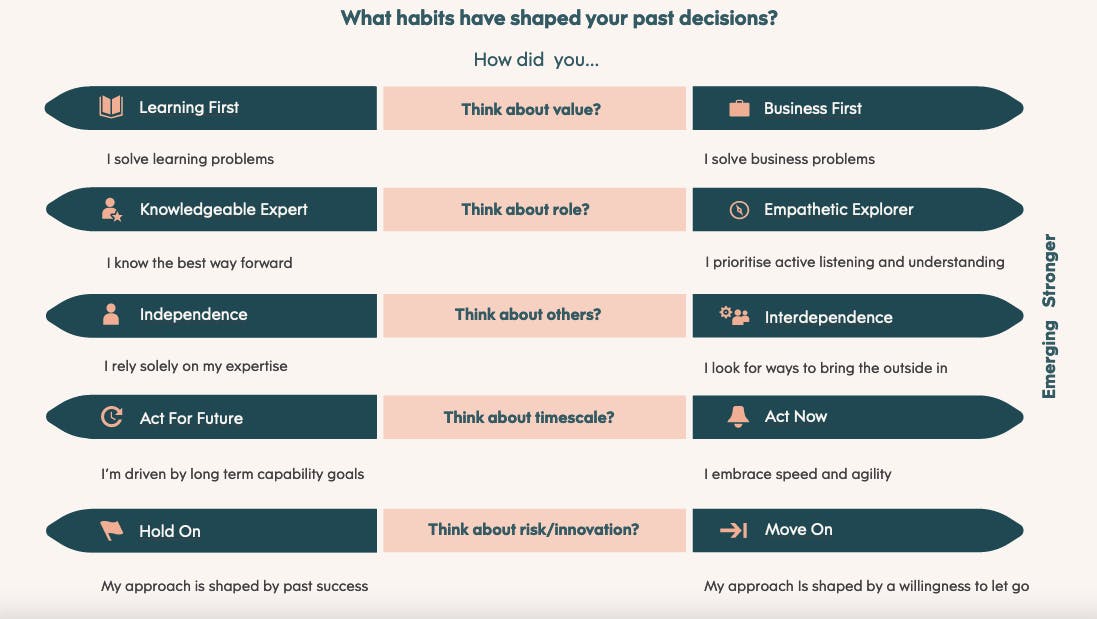
Thinking differently about online content

Written by guest blogger Laura Overton, award-winning L&D Analyst. Laura is an experienced international speaker, author and facilitator with a passion for exploring, challenging and sharing. She believes that the role of learning leaders in the changing workplace is to unlock the potential of business and people.
L&D’s relationship with content
Content has always been an essential part of the L&D professional’s toolkit. From the programs we produce to the resources that we distribute, creating, sharing, and managing content has typically been a primary focus.
While technology has expanded our relationship with content over the last few decades, the pandemic has increased our reliance on it.
A desire to provide more flexible access, more efficiently, to just the right person, at any place has driven L&D’s love affair with online content. That said, the relationship has been a tumultuous one over the years. L&D professionals regularly anguish over a lack of engagement, poor adoption, and a constant battle of priorities.
Ultimately, the online content challenges that L&D face boils down to:
- Poor usage
- No time
- No commitment
We rally against the system, blame the learning culture, look to get senior management’s buy-in, and constantly revisit communication campaigns. However, working harder to fix the system shouldn’t be our first port of call for getting online content to work smarter. Instead, our attitude to online content might also influence the challenges we face and the successes we achieve. Let me explain.
How our thinking habits influence our content decisions
Our inner dialogue will always influence the way we approach challenges. We’ve previously explored examples of L&D thinking habits, including those we need to cultivate to become a smarter, stronger L&D professional.

So, how do these thinking habits influence our online content decisions? Let’s look at three of those habits:
Your value
When you define your value primarily by how you solve learning problems (a learning first thinking habit), you will probably ask, ‘how do I get more people more access to more content, more efficiently?’ More [courses] for less [money] is your mantra.
An alternative thinking habit is business-first, which prioritises solving business problems. In this mindset, L&D professionals are more likely to ask, ‘what is needed here?’ rather than ‘what can I do for you?’
This starting point shines a different light on our content resources. It also allows us to explore how to harness our content resources to address a problem smarter or faster. Those with a business-first mentality are more likely to embrace a mantra of more [value] for less [disruption].
Your role
As trainers, we have relied upon the thinking habit of being a Knowledgeable Expert. In other words, we know the answers, where to go, what to look for, what works. Often, online content has been our backup, the prerequisite or follow-up. It also provides a new platform for Knowledgeable Experts as they create eLearning, microcontent, or video. Knowledgeable Experts are keen to curate the best playlists for others. All of this is excellent, but it is also inward-looking!
Developing the thinking habit of Empathetic Explorer shifts the emphasis to understanding what others are doing and building that into the design. This thinking habit means that we want to listen first and understand the context, to take a proactive role in celebrating and sharing the best playlists curated by others.
Your relationship with others
If the independent thinking habit defines your relationship with others in the organisation, you are likely to concentrate on what you can do for the business. For example, choosing the best content, the best systems, and the best suppliers to meet their needs. You might also feel like you face a constant battle for adoption as you seek to persuade and influence change.
Alternatively, an interdependent thinking habit means that you are always looking for ways to combine your expertise with the expertise of others as you work together to achieve common goals.
The interdependent thinking habit will work its way through your content decisions. For example, what role might this content play in improving the onboarding experience, supporting career flexibility, or increasing the company’s goals of agility? Who do I need to work with to make this vision a reality?
Remember to check back in tomorrow for the second part of this blog, where we will explore practical tips to reinforce these thinking habits and increase the impact of your online content.
For more insights, be sure to subscribe to the Go1 newsletter to stay on top of all the latest L&D trends. Or, you can book a demo today to find out how Go1 can help with your team’s learning needs.




